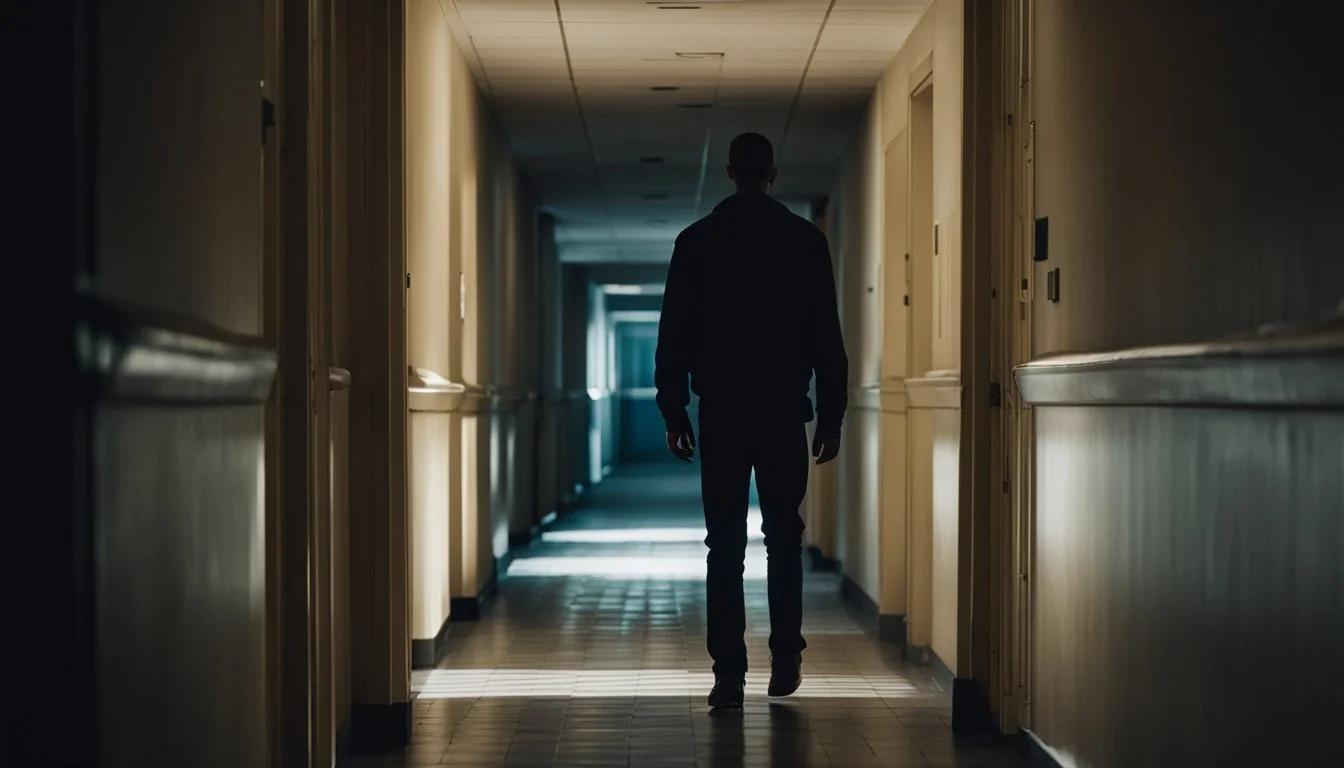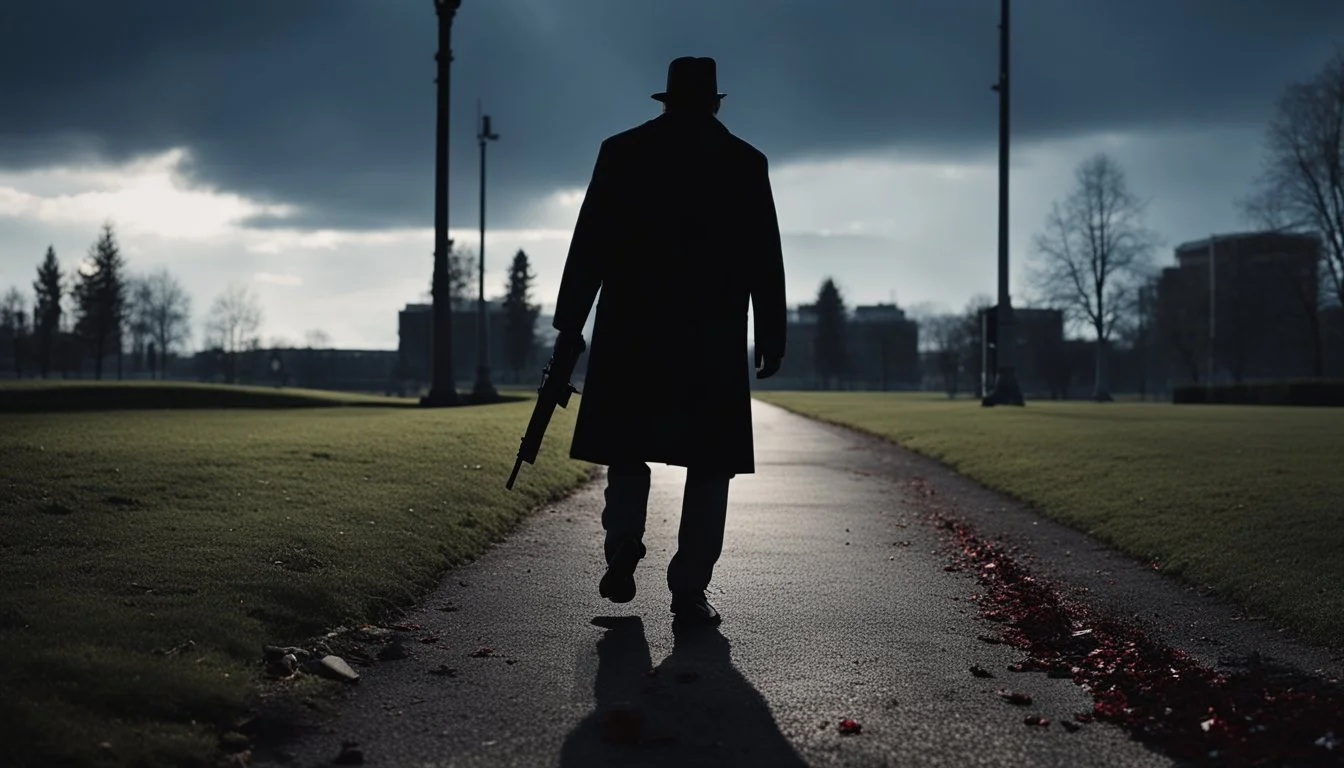8 True Crime Documentaries About Students You Can’t Miss
True crime documentaries often captivate audiences by uncovering shocking and unsettling truths. Focusing on students, these documentaries delve into tales of real-life young individuals whose lives were dramatically affected by crime. They provide a unique perspective on how crime can impact educational environments and communities.
These documentaries offer profound insights into the darker sides of society and the vulnerabilities of students. Presenting a range of cases, they help viewers understand how crimes against students can unfold and the broader repercussions for families and institutions.
1) The Disappearance of Kristin Smart (2020)
Kristin Smart was a 19-year-old student at California Polytechnic State University when she disappeared in 1996. Despite extensive searches and investigations, her body was never found, and she was declared legally dead in 2002.
The case gained renewed attention through true-crime documentaries and podcasts. The "48 Hours" episode, "The Disappearance of Kristin Smart," scrutinizes the investigation and the main suspect, Paul Flores.
A podcast, "Your Own Backyard," delves deeper into the case, providing new insights and prompting public interest and legal action. Flores was eventually arrested and charged with her murder.
For more details, visit IMDB.
2) The Murder of Yeardley Love
The murder of Yeardley Love is a tragic case that has been the focus of significant media and public attention. Yeardley Love was a student and lacrosse player at the University of Virginia.
In May 2010, she was found dead in her off-campus apartment, sparking a nationwide conversation about domestic violence and the pressures faced by student-athletes.
Yeardley's ex-boyfriend, George Huguely V, also a lacrosse player at the same university, was charged and later convicted of her murder. The trial revealed a history of volatile and abusive behavior in their relationship.
The case highlighted the lack of institutional support and resources for students in abusive relationships.
A documentary about this case is often featured as part of true crime series exploring the dangers college students can face. It delves into the impact on the university community and the changes in policy that followed the incident.
For more information, see the Wikipedia page (2013).
3) The Killing of Kenneka Jenkins
"The Killing of Kenneka Jenkins" explores the tragic death of a 19-year-old Chicago student. Kenneka Jenkins was found deceased inside a hotel freezer in September 2017. She had attended a party with friends at the Crowne Plaza Hotel in Chicago before her disappearance.
The case garnered widespread attention due to its mysterious circumstances. Surveillance footage showed Kenneka stumbling through the hotel halls alone, which led to much speculation about how she ended up in the freezer.
Dometi Pongo investigates the case in the "True Life Crime" series. The documentary examines evidence, interviews family members, and looks into various theories surrounding her death. Public interest in the case was heightened by social media, leading to numerous amateur investigations.
Jenkins’ death raised many questions about hotel security, party culture, and police investigations. It remains one of the more perplexing true crime cases involving a student.
For more information, you can visit the IMDb page for this episode (2020).
4) The Case of Hannah Graham
Hannah Graham, an 18-year-old second-year student at the University of Virginia, went missing on September 13, 2014. Her disappearance sparked widespread concern and led to an extensive search effort.
The case drew significant media attention, uncovering links to other disappearances in Virginia, including Morgan Harrington and Alexis Murphy. Authorities ultimately connected Graham’s abduction to Jesse Matthew, a former Liberty University football player.
Documentaries like "Hannah Graham: Deadly Connections: Part 1" (2015) on IMDb offer insights into the investigation, detailing the efforts to solve the case and revealing the tragic outcomes. The program is a stark reminder of the dangers students may face.
More information can be found on the film's IMDb page.
5) The Story of Natalee Holloway (2017)
Natalee Holloway, an 18-year-old from Alabama, vanished during a high school graduation trip to Aruba in May 2005. Her disappearance has been the subject of intense media coverage and several documentaries.
One significant documentary is "The Disappearance of Natalee Holloway" (2017). This Oxygen True Crime docuseries spanned six episodes and featured new interviews and leads, highlighting the tireless efforts of Natalee's father, Dave Holloway, to discover the truth.
The case gained renewed interest with the involvement of Joran van der Sloot, a Dutch man who was the last person seen with Natalee. Joran later faced charges for the murder of another woman, Stephany Flores, in Peru.
The documentary examines new evidence and interviews people linked to the case, including John Ludwick, who claimed Joran paid him to dispose of Natalee's remains. This docuseries provides viewers with an in-depth look at one of the most perplexing and heartbreaking cases in recent times.
More about "The Disappearance of Natalee Holloway"
6) Murder on the University of Virginia Grounds
The University of Virginia experienced a tragic event when three football players were killed, and two students were wounded in a shooting incident.
The perpetrator, who was later arrested, caused panic across the campus with his actions. The shooting led to a series of investigations and heightened security measures at the university.
This documentary delves into the details of the shooting, exploring the motives behind the attack and the impact on the community. The film also examines how the university responded and the broader implications for campus safety.
Find more information about this documentary here.
7) The Mystery of Kendrick Johnson (2021)
The documentary "Finding Kendrick Johnson" explores the tragic and mysterious death of Kendrick Johnson, a 17-year-old high school student. He was found dead in 2013 in his high school's gym, rolled up inside a gym mat. This incident raised significant questions and concerns.
Kendrick's family has long sought answers, believing that the initial investigation overlooked crucial details. The film delves into these concerns, providing an in-depth look at the case and the various theories surrounding his death.
Director Jason Pollock presents an investigation into the circumstances and alleged cover-up of Kendrick Johnson's death. The documentary features interviews and insights that aim to shed light on this perplexing case.
For more information on "Finding Kendrick Johnson," visit IMDb.
(Note: Information included about the documentary's director and subject matter has been adapted from the provided search results.)
8) The Vanishing of Maura Murray (2017)
The disappearance of Maura Murray is one of the most perplexing cases in true crime history. Maura, a 21-year-old nursing student, vanished on February 9, 2004, after a car accident in rural New Hampshire. Despite numerous investigations, her whereabouts remain unknown.
The documentary "The Disappearance of Maura Murray" delves into the events leading up to her disappearance. The series explores various theories, from voluntary disappearance to foul play. Interviews with family, friends, and law enforcement provide multiple perspectives on the mysterious case.
Witnesses reported seeing Maura at the scene of the accident. By the time police arrived, she had vanished without a trace. The documentary captures the exhaustive search efforts and the emotional toll on her family.
This case continues to captivate audiences due to its unresolved nature. The film is a must-watch for those interested in true crime and unsolved mysteries.
For more details, visit IMDb.
The Impact of True Crime Documentaries on Students
True crime documentaries influence students in various ways, from psychological responses to educational insights. These effects shape their perceptions and behaviors significantly.
Psychological Effects
True crime documentaries can evoke a range of psychological effects in students. For many, exposure to graphic content and real-life crimes can lead to increased anxiety and fear. This content may cause some to feel more vulnerable, particularly those in campus environments.
The anticipation and suspense in these documentaries can contribute to heightened emotional responses. Studies have shown that repeated exposure to crime-related media can create a skewed perception of the prevalence of crime, leading some individuals to adopt protective behaviors, like avoiding certain areas or staying indoors after dark.
However, not all students react negatively. Some find these documentaries thrilling, providing a safe way to explore fear and crime from a distance. The fascination with criminal behavior and justice processes captivates many, fostering deeper interest in psychological and sociological studies.
Educational Benefits
True crime documentaries also offer significant educational benefits. They provide real-world case studies that help students understand complex legal, psychological, and sociological concepts. For instance, understanding the motives behind criminal actions or the intricacies of the justice system can be more engaging through visual storytelling.
Documentaries like "Making a Murderer" offer insights into the procedural aspects of law and the potential biases within the judicial system. They expose viewers to investigative journalism, critical thinking, and the importance of evidence in legal cases.
These programs can also spark interest in various fields, such as forensic science, criminal justice, and psychology. By depicting the consequences of crime and the efforts for justice, students gain a multifaceted understanding of societal issues and the importance of ethical practices.
Ethical Considerations in True Crime Documentary Production
Producing true crime documentaries involves navigating complex ethical issues, especially regarding truth and sensitivity, as well as consent and privacy of individuals involved.
Balancing Truth and Sensitivity
True crime documentaries strive to convey factual accounts of real events.
Yet, filmmakers must balance this truth with sensitivity towards the subjects and the audience. Accurately portraying events without sensationalizing or exploiting the pain of victims or their families is crucial. Misrepresentations can distort public perceptions and influence ongoing legal proceedings.
Maintaining a respectful tone can help build credibility and trust with the audience. As the content often covers traumatic events, filmmakers should consider the impact on viewers and use content warnings where appropriate. The goal is to inform and educate, not to sensationalize or harm.
Consent and Privacy Issues
Gaining informed consent from all parties involved and protecting their privacy are paramount. Subjects' participation should be voluntary and based on a clear understanding of how their stories will be depicted.
Filmmakers must navigate privacy laws and ethical considerations when dealing with vulnerable populations, such as minors or those not in the public eye. Unauthorized use of personal information can lead to legal repercussions and ethical breaches.
Respecting anonymity, where requested, and being transparent about the documentary's purpose are important steps. Proper handling of sensitive information ensures trust and respects the dignity of those affected by the narrative.
Through careful consideration of these ethical factors, true crime documentaries can maintain integrity and respect for those whose stories they tell.






